Rhinoplasty in Mexicali
Search and Compare the Best Clinics and Doctors at the Lowest Prices for Rhinoplasty in Mexicali

Find the best clinics for Rhinoplasty in Mexicali
With Medijump you can browse 5 facilities offering Rhinoplasty procedures in Mexicali. The cheapest price available is $1,314 in Monterrey
Rhinoplasty in Mexico
Price: $ 1,314
Rhinoplasty in Monterrey
Price: $ 1,314
Rhinoplasty in Guadalajara
Price: $ 1,553
Poland offers the best prices Worldwide
Price: $ 101
From 69 verified reviews
María del refugio Ponce, 01 March 2022
The doctors and nurses are very attentive to the patient but those who are at the entrance do not give information to the family and do not let anyone in
From 4 verified reviews
Fabiola DeVries, 17 September 2020
I cannot express enough how happy I am to have found Dr. Aceves. I recommend him to all my friends and family who have expressed interest in plastic surgery.
From 24 verified reviews
Allison Saggio, 06 September 2020
Just Wow!! I had some surgery done by Doctor Amaya, and I can’t believe how much they spoil you in this hospital, everyone was really nice and always looking for your well being, the best part is you have your own room for recovery 😍 I am from California by the way.Thank you so much guys
From 22 verified reviews
Nancy Simental, 17 September 2020
Super sweet and helpful doctor. My cousin recommended him. She has also had work done with him and her results are amazing. He took me in last minute after I had another doctor who kept rescheduling me, I went Dr. Ramirez. He has no idea how much this surgery meant to me. I cried when I was done because I have wanted this so long and my other dr did not do a good job. Thank you so much Dr. Ramirez and staff, for being so kind and accommodating.
Hispano Americano Hospital, located in Cto Brasil, Mexicali, Mexico offers patients Rhinoplasty procedures among its total of 54 available procedures, across 10 different specialties. Currently, there's no pricing information for Rhinoplasty procedures at Hispano Americano Hospital, as all prices are available on request only, whilst the national average price is approximately $2,794. There are many specialists available at the Hospital, with 7 in total, and they have multiple recognized accreditations, including: CMCOM - Consejo Mexicano de Cirugía Oral y MaxilofacialAMCC - Academia Mexicana de Cirugia CosmeticaAMCE - Asociación Mexicana de Cirugía LaparoscópicaAMCG - Asociación Mexicana de Cirugía GeneralAMCPER - Asociación Mexicana de Cirugía Plástica, Estética y ReconstructivaCMCOEM - Colegio Mexicano de la Cirugía de Obesidad y Enfermedades MetabólicasCMCPER - Consejo Mexicano de Cirugía Plástica, Estética y ReconstructivaCMGO - Consejo Mexicano de Ginecología y ObstetriciaCMOT - Consejo Mexicano de Ortopedia y TraumatologíaCMU - Colegio Mexicano de UrologíaCNCPER - Colegio Noreste de Cirugía Plástica Estética y Reconstructiva
Compare Before & After Photos of _procedure_photos.phpRhinoplasty
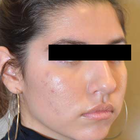

Half-side view


Front view

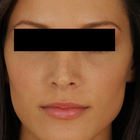
Front view
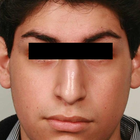
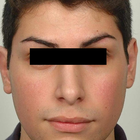
Front view
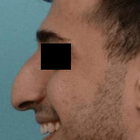

Full-side view
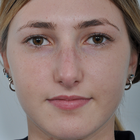

Front view


Front view

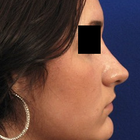
Full-side view
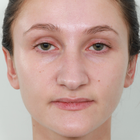
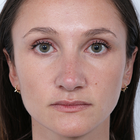
Front view
WHY US?
At Medijump, we're making medical easy. You can search, compare, discuss, and book your medical all in one place. We open the door to the best medical providers worldwide, saving you time and energy along the way, and it's all for FREE, no hidden fees, and no price markups guaranteed. So what are you waiting for?

Free

Best Price

Widest Selection

Risk-Free
What you need to know about Rhinoplasty in Mexicali

Rhinoplasty, commonly known as the “nose job,” is plastic surgery to change the shape of the nose and to improve its function. This procedure can be performed for medical and cosmetic reasons. Those with breathing problems caused by a birth defect, deviated septum, sinusitis, or an injury to the nose, as well as those who are not happy with the appearance of their nose, can undergo rhinoplasty.
Rhinoplasty has a number of benefits. However, the most compelling reason for patients to have this surgery is to improve the appearance of their noses, which can boost their self-esteem significantly. Besides altering the form and size of your nose, the procedure can also strengthen the bridge, narrow the nostrils, and reshape the tip.
While anyone can undergo rhinoplasty, teenagers are advised to wait until their nose has reached its adult size.
What does a Rhinoplasty Procedure Involve?
During rhinoplasty, you will be given local or general anesthesia to make sure that you are comfortable and you don't feel any pain. Your surgeon might perform the procedure inside your nose or through an incision at the base of your nose.
Changing the shape of your nasal bones or cartilage can be done in several ways, depending on how much needs to be added or removed, available materials, and your nose’s structure.
If your nose needs to be augmented because you want to increase its size, prosthetic implants or cartilage from your nasal septum or ear is used. Once your surgeon is done altering the shape of your nose and correcting any defect, they will place the nose’s skin and tissue back, then close the incisions with stitches.
How Long Should I Stay in Mexicali for a Rhinoplasty Procedure?
Depending on the complexity of the procedure and the type of anesthesia used, you may be able to leave the hospital on the same day or stay in the hospital for a day or two. The surgery itself takes around 1.5 to 3 hours to complete. Once you are discharged from the hospital, you should not leave Mexicali right away. Instead, plan to stay about 10 to 14 days for initial recovery and follow-up checkups. A week following the surgery, your surgeon will remove your stitches.
What's the Recovery Time for Rhinoplasty Procedures in Mexicali?
You generally need to wait at least 2 to 3 weeks until you can resume most of your normal activities. However, you should not perform any strenuous activities, such as intense exercise, for about 3 to 6 weeks. During the first few days after the surgery, you will experience some swelling around your eyes, but these will subside within 3 to 14 days. You will also have to wear a nasal splint for about a week following the surgery.
What sort of Aftercare is Required for Rhinoplasty Procedures in Mexicali?
Since you may experience some discomfort, your surgeon will give you painkillers to ease any pain and discomfort. Make sure to take the pain medication as prescribed. For a couple of weeks following the surgery, you should not blow your nose, as well as laughing or talking too much. You also need to avoid any clothes that need to be pulled over your head and glasses on your nose for a few weeks. Always make sure to cover your nose while going out in the sun during your recovery period.
It's important that you avoid bumping or hitting your nose, and keep your nose safe and protected from anything that could misalign the bones and undo the results. To help you recover smoothly and quickly, eat healthy and nutritious food.
What's the Success Rate of Rhinoplasty Procedures in Mexicali?
Rhinoplasty is considered one of the most complicated facial cosmetic surgeries. However, thanks to the advances in technology and surgeons’ extensive experience, the procedure has a very high success rate of between 85% and 90%.
Although rhinoplasty is generally safe, it does carry some potential risks of complications and side effects, including bleeding, infection, allergic reaction to the anesthesia, permanent numbness in your nose, difficulty breathing through the nose, an uneven-looking nose, discoloration, persisting pain, scarring, septal perforation, and a need for additional surgery.
Are there Alternatives to Rhinoplasty Procedures in Mexicali?
If you are unable to undergo rhinoplasty, you can opt for its minimally invasive or noninvasive alternatives, such as filler injections or Botox. Both filler injections and Botox are noninvasive and require only a very short visit with your doctor. It works by injecting the substance into your nose to change its shape. Many people choose these methods because it is not as painful as rhinoplasty, requires little to no downtime, and no incision or stitches are involved.
If you want to improve your breathing, you may be recommended to use nasal strips. The nasal strip is a type of bandage with adhesive-embedded splints or plastic ribs that is applied across the bridge of the nose and the sides of the nostrils. It can keep the airway open, making breathing easier.
Whilst the information presented here has been accurately sourced and verified by a medical professional for its accuracy, it is still advised to consult with your doctor before pursuing a medical treatment at one of the listed medical providers
No Time?
Tell us what you're looking for and we'll reachout to the top clinics all at once
Enquire Now

Popular Procedures in Mexicali
Prices Start From $404

Prices Start From $1,945

Prices Start From $192

Prices Start From $500

Recommended Medical Centers in Mexicali for Rhinoplasty

- Interpreter services
- Translation service
- Religious facilities
- Medical records transfer
- Medical travel insurance
- Health insurance coordination
- TV in the room
- Safe in the room
- Phone in the room
- Private rooms for patients available

- Interpreter services
- Translation service
- Religious facilities
- Medical records transfer
- Medical travel insurance
- Health insurance coordination
- TV in the room
- Safe in the room
- Phone in the room
- Private rooms for patients available

- Interpreter services
- Translation service
- Religious facilities
- Medical records transfer
- Medical travel insurance
- Health insurance coordination
- TV in the room
- Safe in the room
- Phone in the room
- Private rooms for patients available

- Interpreter services
- Translation service
- Religious facilities
- Medical records transfer
- Medical travel insurance
- Health insurance coordination
- TV in the room
- Safe in the room
- Phone in the room
- Private rooms for patients available

- Interpreter services
- Translation service
- Religious facilities
- Medical records transfer
- Medical travel insurance
- Health insurance coordination
- TV in the room
- Safe in the room
- Phone in the room
- Private rooms for patients available
Rhinoplasty in and around Mexicali
About Mexicali
Mexicali is a Mexican desert city with a population of 1 million and is situated on the Mexico-USA border, adjacent to its sister city Calexico, California. It is also the capital city of the state of Baja California. The small, yet, modernized business and the industrial city is well known for its highly educated population and also for the high standard of living. The city's close proximity to the US makes it an ideal weekend getaway spot for the Americans.
The main draw for tourists in Mexico is undoubtedly the medical care provided. In just the previous year, over 150,000 medical tourists touched down in Mexicali. These patients didn't only travel from neighboring USA, but also from regions as far-flung as Canada, Europe, and other global corners, truly highlighting the international appeal of medical tourism in Mexico.
Mexicali has a high-level infrastructure for medical care. A wide network of private and public hospitals, such as Hospital de la Familia and Hospital Hispano Americano, and clinics and laboratories guarantee specialized care. The city has 19 world-class hospitals, 418 dental consulting rooms, and 241 specialty consulting rooms.
Mexicali's medical sector, certified as per US standards, boasts skilled doctors and surgeons proficient in performing a wide spectrum of medical procedures. One unique advantage is the absence of waiting time with prompt and efficient services. Furthermore, the post-operative care provided is of exceptional quality, offering patients comprehensive support and guidance during recovery.
Affordability is a key feature of health care facilities and services in Mexicali. When drawn in comparison with the USA, medical costs can yield savings of up to 60%. Additionally, dental services come at roughly 70% cheaper, while prescribed medicines can be procured at a staggering 75% less, making Mexicali an attractive and pocket-friendly destination for medical tourism.
The hospitals cater to their medical tourists by providing exclusive transportation facilities, ensuring utmost convenience and ease. Additionally, they can assist in securing accommodations in top-tier hotels at appealing rates, thereby making the entire medical tourism experience a comfortable and hassle-free one.
Popular Areas in Mexicali
Mexicali is a compact city, full of life and entertainment. You can find a decent number of expatriates living here, most of them being Americans. Although the cost of living is cheaper when compared to that in the US, housing is expensive. San Pedro is the most expensive neighborhood in Mexicali. Los Pinos, Jardines Del Valle, Villafontana, Zona Dorada, Calle Novena, and Independencia are some of the popular residential localities of the city.
Nestled in the neighborhood of La Chinesca, a flourishing community of around 15,000 Chinese expats and immigrants thrives. Bearing the mark of its diverse population, La Chinesca boasts a sizable collection of Chinese restaurants, offering a gastronomic portal to China amidst the Mexican landscape.
The nightlife is lively and exciting with a variety of bars and clubs and most of the bars stay open to the wee hours of the morning serving drinks and food. Lined with family-friendly hotels and guesthouses, the city offers a wonderful array of entertainment and cultural venues and has several theatres, water parks, and museums.
Situated to the south of Mexicali, in the Gulf of California, the picturesque San Felipe reveals itself. It is graced with breathtakingly scenic beaches, hosting a variety of water sports for the adventurous at heart. Additionally, the town serves up delicious fresh seafood, adding a gastronomic delight to the visual spectacle.
Embedded in the desert landscape, the awe-inspiring Guadalupe Canyon emerges as an oasis. Flanked by lush palm trees, this enclave features natural pools and waterfalls, carving out a serene sanctuary amidst the otherwise barren surroundings.
Weather and Climate in Mexicali
Mexicali experiences a dry climate due to its minimal rainfall, receiving an average annual precipitation as slight as 79 mm. With an average annual temperature of 22.5°C, the climate is generally warm, to hot. The most comfortable periods for a visit fall between early April to mid-June, and from September to November when temperatures are most agreeable.
Summer and winter are the prominent seasons in Mexicali.
- Summer: April to October. Summer is hot and dry. July is the warmest month of the year, with an average temperature of 33°C. The temperature during the afternoon can reach 40°C. It barely rains during the summer. May is the driest month with zero precipitation.
- Winter: November to March. December, January, and February are cool yet dry. The month of January receives the maximum amount of rain and it is the coldest month of the year. At times, the temperature may even drop to 12.5°C during the winter months.
Getting around in Mexicali
General Rodolfo Sánchez Taboada International Airport is conveniently located just 20 km outside of Mexicali city. Numerous private and commercial flights operate from this hub, connecting Mexicali to a variety of cities across Mexico and the USA.
The city's main bus station is located a mere 4 km from downtown Mexicali, easily accessible by taxi or public bus from the city center. Once at the station, a network of direct coaches links Mexicali to other major Mexican cities. For visitors arriving from the United States, entry to Mexicali can be accomplished through Calexico, its twin city, along Highway 111. Do note that most of these highways are toll roads.
However, the local bus is the cheapest means of transportation. Some of the metro buses are air-conditioned with TV screens. Taxis are easy to find and are reasonably priced.
Tourist Visa in Mexicali
Visa exemptions for Mexico - Citizens of 67 countries, including Europe, Canada, Australia, and the USA, are exempt from obtaining a visa to visit Mexico for up to 180 days.
Visa requirements for citizens of India, China, Russia, and other countries - Citizens of India, China, Russia, and a few other countries need to obtain a tourist visa in advance before entering Mexico. The visa is valid for six months and a single entry, and an extension may be possible. You must enter Mexico within 90 days of the issue of the visa.
Tourist visa fee - The tourist visa fee for citizens of India is $22 USD.
To be eligible for a Mexican tourist visa, you must meet the following criteria:
- You must have a valid passport with at least six months of validity remaining beyond your planned date of departure from Mexico.
- You must have sufficient funds to support your stay in Mexico.
- You must have a return ticket or proof of onward travel.
- You must not have any criminal record.
Additional Information
- The Mexican currency is the Mexican peso (MXN). The Mexican peso is pegged to the US dollar, and the exchange rate fluctuates slightly on a daily basis. As of today, October 11, 2023, one US dollar is equivalent to approximately 19.6 Mexican pesos.
- Most people in Mexicali speak Spanish, followed by a few indigenous languages. The majority of the locals understand and speak good English.
- There are ATMs all over Mexicali, but none of them dispense US dollars. You will need to exchange your US dollars for Mexican pesos at a bank or money exchange bureau. Most major credit cards are accepted in restaurants and resorts in Mexicali.
- Approximately 77% of the population of Mexicali is Roman Catholic. Other religions practiced in Mexicali include Protestantism, Judaism, and Islam.
- New Year's Eve, Constitution day (February 4), Birthday of Benito Ju (March 18), Good Friday, Independence Day (September 16), Revolution Day (November 18), Christmas day are some of the public holidays in the city.
Popular Searches
- Plastic Surgery in Thailand
- Dental Implants in Thailand
- Hair Transplant in Thailand
- Breast Augmentation Thailand
- Gastric Sleeve in Thailand
- Gender Reassignment Surgery in Thailand
- Laser Hair Removal in Bangkok
- Botox in Bangkok
- Dermatology in Bangkok
- Breast Augmentation in Bangkok
- Coolsculpting in Bangkok
- Veneers in Turkey
- Hair Transplant in Turkey
- Rhinoplasty in Turkey
- Stem Cell Therapy in Mexico
- Rhinoplasty in Mexico
- Liposuction in Mexico
- Coolsculpting in Tijuana
- Rhinoplasty in Korea
- Scar Removal in Korea
- Gastric Sleeve in Turkey
- Bone Marrow Transplant in India
- Invisalign in Malaysia
- Plastic Surgery in the Dominican Republic
- Tummy Tuck in the Dominican Republic
- Plastic and Cosmetic Surgery in Poland
- Rhinoplasty in Poland
- Hair Implant in Poland
- Dental Implants in Poland
- IVF in Turkey




